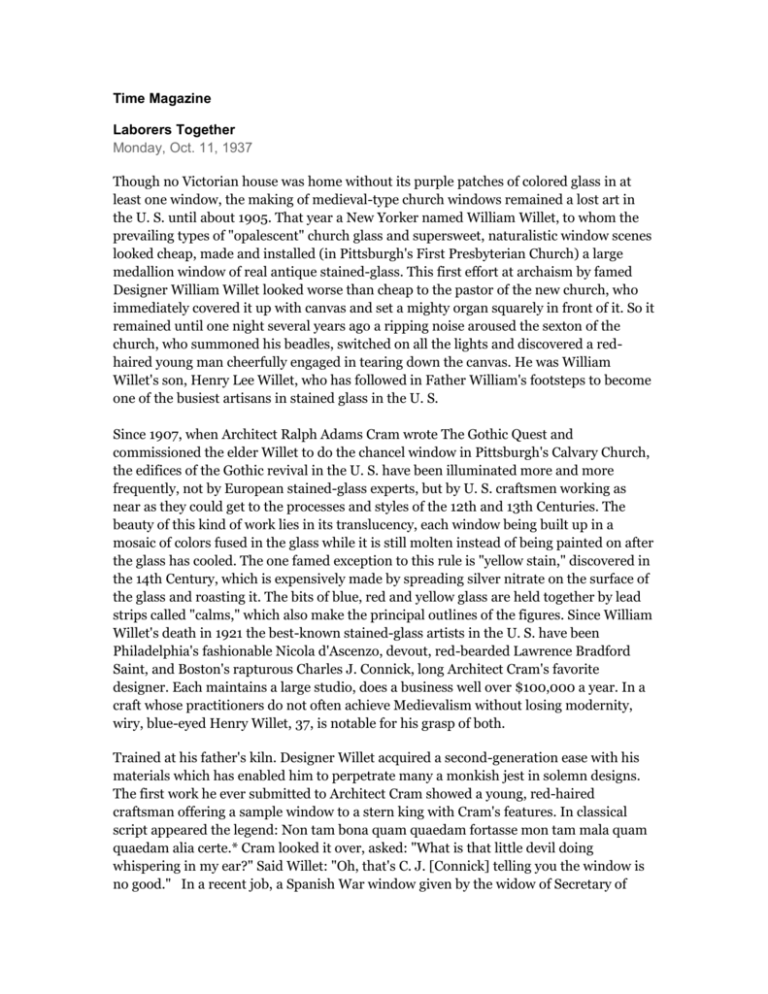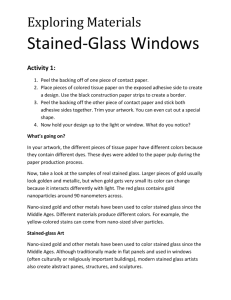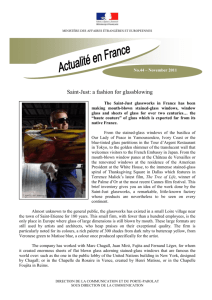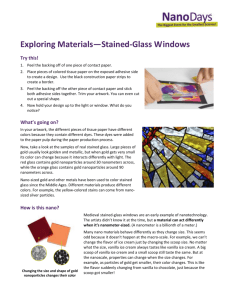HenryLeeWillet_Time_Magazine_Article - fpc
advertisement

Time Magazine Laborers Together Monday, Oct. 11, 1937 Though no Victorian house was home without its purple patches of colored glass in at least one window, the making of medieval-type church windows remained a lost art in the U. S. until about 1905. That year a New Yorker named William Willet, to whom the prevailing types of "opalescent" church glass and supersweet, naturalistic window scenes looked cheap, made and installed (in Pittsburgh's First Presbyterian Church) a large medallion window of real antique stained-glass. This first effort at archaism by famed Designer William Willet looked worse than cheap to the pastor of the new church, who immediately covered it up with canvas and set a mighty organ squarely in front of it. So it remained until one night several years ago a ripping noise aroused the sexton of the church, who summoned his beadles, switched on all the lights and discovered a redhaired young man cheerfully engaged in tearing down the canvas. He was William Willet's son, Henry Lee Willet, who has followed in Father William's footsteps to become one of the busiest artisans in stained glass in the U. S. Since 1907, when Architect Ralph Adams Cram wrote The Gothic Quest and commissioned the elder Willet to do the chancel window in Pittsburgh's Calvary Church, the edifices of the Gothic revival in the U. S. have been illuminated more and more frequently, not by European stained-glass experts, but by U. S. craftsmen working as near as they could get to the processes and styles of the 12th and 13th Centuries. The beauty of this kind of work lies in its translucency, each window being built up in a mosaic of colors fused in the glass while it is still molten instead of being painted on after the glass has cooled. The one famed exception to this rule is "yellow stain," discovered in the 14th Century, which is expensively made by spreading silver nitrate on the surface of the glass and roasting it. The bits of blue, red and yellow glass are held together by lead strips called "calms," which also make the principal outlines of the figures. Since William Willet's death in 1921 the best-known stained-glass artists in the U. S. have been Philadelphia's fashionable Nicola d'Ascenzo, devout, red-bearded Lawrence Bradford Saint, and Boston's rapturous Charles J. Connick, long Architect Cram's favorite designer. Each maintains a large studio, does a business well over $100,000 a year. In a craft whose practitioners do not often achieve Medievalism without losing modernity, wiry, blue-eyed Henry Willet, 37, is notable for his grasp of both. Trained at his father's kiln. Designer Willet acquired a second-generation ease with his materials which has enabled him to perpetrate many a monkish jest in solemn designs. The first work he ever submitted to Architect Cram showed a young, red-haired craftsman offering a sample window to a stern king with Cram's features. In classical script appeared the legend: Non tam bona quam quaedam fortasse mon tam mala quam quaedam alia certe.* Cram looked it over, asked: "What is that little devil doing whispering in my ear?" Said Willet: "Oh, that's C. J. [Connick] telling you the window is no good." In a recent job, a Spanish War window given by the widow of Secretary of War Russell Alexander Alger (1897-99) to the Grosse Point Memorial Church near Detroit, Willet showed Theodore Roosevelt charging up San Juan Hill. When he learned that Mrs. Alger did not like Roosevelt, he merely changed Roosevelt's face to Alger's. From his farm near Ambler, Pa., Henry Lee Willet drives every day into West Philadelphia where he has a big, three-story studio and about 20 craftsmen working fulltime on jobs which at the moment include windows for Minneapolis, St. Louis and Louisville. He pays apprentices $12 a week, experienced artists as much as $85, mechanics according to the union scale, which is $1 per hr. in Philadelphia. Like Lawrence Saint, he is a Presbyterian elder, recently persuaded the Presbytery of Philadelphia North to establish a committee of social action. He and Saint are good friends but he thinks Saint's life-long labors at making his own glass (TIME, July 20, 1936) are "all hooey." Mr. Willet buys the glass he uses from English craftsmen or from William Blenko of Milton, West Virginia, whom he rates as the best U. S. glassmaker. Despite this businesslike attitude and despite having produced several of the best examples of medieval stained-glass humor in the U. S., Willet has very serious theories on window designing, which he regards as nearer to music than painting. He prefers the 12th Century masters who used large pieces of glass in the primary colors, simply juxtaposed, rather than designers of the 13th Century, who broke up their glowing blues and reds in complex patterns at the risk of purplish vibrations of light. "Purple addles your brain," Henry Willet says. Last week, at the new Universalist Church of the Restoration in Germantown, Pa., designer Willet's latest and most guild-minded window was dedicated. It was commissioned by Architect J. Roy Carroll Jr., in the belief that, if the church had at least one good stained-glass window, parishioners would be inspired to replace the others, which are plain. When the contractors, subcontractors and workmen heard that Henry Willet was designing a "Workmen's Window" to represent the various trades engaged in building the church, they clubbed together to pay for it. Designer Willet happily put Architect Carroll at the bottom of the window, looking pale, and the stained-glass craftsman at the top, under a benevolent angel. A vine etched in gold joins the 14 figures in between—iron worker, excavator, stone mason, carpenter, woodcarver, electrician, roofer, plumber, plasterer, painter—and lettering sets forth: "We Are Laborers Together; Let Every Man Take Heed How He Buildeth." “Not as good as some, perhaps, not as bad as others, surely.”






